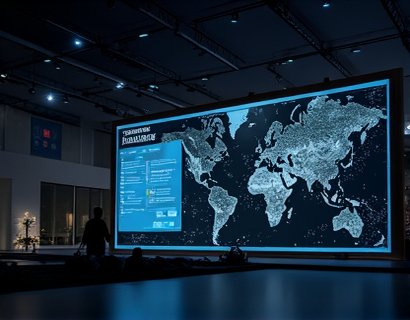Streamlining Web Development with Custom Placeholder Code Generators
In the fast-paced world of web development, efficiency and productivity are paramount. One innovative solution that has gained traction among developers, designers, and business owners is the custom placeholder code generator. This tool is designed to save time and enhance efficiency by providing customizable templates that can be used to generate placeholder website code. The primary goal is to create professional and visually appealing content without the hassle of starting from scratch, ensuring that website designs are both functional and attractive.
The concept of using placeholder code is not new, but the advancement in technology has made it more accessible and user-friendly. Traditionally, developers would spend a significant amount of time crafting dummy content to test layouts, styles, and functionalities. With a custom placeholder code generator, this process is significantly streamlined. The tool allows users to input specific requirements and generates code snippets that mimic real content, complete with text, images, and even interactive elements.
Benefits of Using a Custom Placeholder Code Generator
One of the most significant advantages of using a custom placeholder code generator is the time savings. Instead of manually creating dummy content, developers can generate it with a few clicks. This not only accelerates the development process but also allows teams to focus on more critical aspects of the project, such as coding, design refinement, and functionality testing.
Another benefit is the consistency and professionalism that placeholder code brings. The generated content is designed to look real, which helps in visualizing the final product more accurately. This is particularly useful during client presentations, where a realistic preview can lead to better feedback and fewer revisions.
For designers, placeholder code generators offer a way to test and refine layouts without the need for actual content. This means that design iterations can be performed more efficiently, leading to a more polished final product. Additionally, the ability to quickly swap out different design elements and see how they look in context can significantly enhance the design process.
How Custom Placeholder Code Generators Work
Custom placeholder code generators operate on a simple yet powerful principle: they create dummy content that resembles real data. The process typically involves a few steps. First, the user inputs the structure of the website, including the number of pages, sections, and specific elements like headers, footers, and content areas. Some advanced tools may also allow for the customization of text styles, font sizes, and even image placeholders.
Once the structure is defined, the generator uses predefined templates to create the placeholder code. These templates are designed to mimic common website elements and can be tailored to fit various design and functionality requirements. The generated code is then ready to be integrated into the development environment, where it can be further customized as needed.
The beauty of these generators lies in their flexibility. Users can choose from a variety of templates, each designed for specific types of websites, such as blogs, e-commerce sites, or portfolio portfolios. This ensures that the placeholder code is relevant and useful for a wide range of projects.
Customizable Templates for Diverse Needs
One of the key features of modern placeholder code generators is the extensive library of customizable templates. These templates are crafted by experienced developers and designers to cover a broad spectrum of website types and purposes. Whether you are building a simple landing page or a complex e-commerce platform, there is a template to suit your needs.
Customizability is a crucial aspect of these templates. Users can modify text, change font styles, adjust spacing, and even add custom CSS to fine-tune the appearance of the placeholder content. This level of control ensures that the generated code aligns perfectly with the desired design vision.
For example, a developer working on an e-commerce site can select a template specifically designed for online stores. They can then customize the template to include product grids, shopping cart icons, and other relevant elements. The generator will produce placeholder code that includes dummy product names, prices, and descriptions, all formatted to look like real e-commerce content.
Enhancing Developer Productivity
For web developers, the productivity boost from using a placeholder code generator is substantial. Instead of spending hours crafting dummy data, developers can focus on writing actual code and implementing features. This shift in focus not only speeds up the development process but also reduces the likelihood of errors, as the placeholder code serves as a reliable starting point.
Moreover, the ability to quickly generate and test different layout and design variations allows developers to experiment more freely. This iterative process can lead to more innovative and user-friendly designs. The generator acts as a sandbox, where developers can play with different elements without the pressure of creating everything from scratch.
Designers' Perspective
Designers benefit equally from placeholder code generators. The ability to visualize their designs with realistic content helps in making more informed decisions during the design process. The generated placeholders can be used to create mockups and prototypes that can be shared with clients for feedback.
Furthermore, the customization options allow designers to experiment with different color schemes, typography, and layout configurations. This experimentation can lead to more refined and aesthetically pleasing designs. The generators also save time in creating high-fidelity mockups, as the placeholder code can be easily converted into actual design assets.
Business Owners and Digital Agencies
For business owners and digital agencies, placeholder code generators are invaluable tools for showcasing project progress and securing client approval. The realistic previews generated by these tools can be presented in meetings, presentations, or on client portals, providing a clear and compelling view of the upcoming website.
Digital agencies can use these generators to streamline their workflow, allowing them to handle multiple projects simultaneously without compromising on quality. The efficiency gained from using placeholder code means that agencies can deliver projects faster and with higher satisfaction rates, leading to better client relationships and repeat business.
Optimizing Online Presence
Beyond the immediate benefits of time savings and enhanced productivity, placeholder code generators contribute to optimizing a website's online presence. A well-designed and professionally looking website can significantly improve user engagement and conversion rates. The realistic placeholders generated by these tools help ensure that the website's design is not only visually appealing but also functional and user-friendly.
Moreover, the ability to test different design elements and layouts using placeholder code can lead to better SEO performance. A clean, well-structured codebase is more favorable to search engines, potentially improving the website's search rankings. The generators can help create a solid foundation that can be built upon with high-quality, SEO-optimized content.
Integration and Compatibility
Modern placeholder code generators are designed to be compatible with a wide range of development environments and frameworks. Whether you are using WordPress, React, Angular, or vanilla JavaScript, there is a generator that can integrate seamlessly into your workflow. This versatility ensures that developers and designers can use the tools that best fit their specific needs and preferences.
Additionally, many generators offer plugins or extensions that enhance their functionality. For instance, a plugin might allow for the generation of responsive placeholder code, ensuring that the website looks great on all devices. Another extension could provide pre-built components for common web elements, further speeding up the development process.
Community and Support
The community around placeholder code generators is growing, with numerous developers and designers contributing to the development and improvement of these tools. This collaborative environment leads to the creation of more robust and feature-rich generators. Users can access forums, documentation, and tutorials to help them get the most out of the tools.
Support is also a critical aspect, ensuring that users can resolve any issues they encounter. Most generators offer comprehensive documentation and customer support, making it easier for new users to adopt these tools. This support system is essential for maintaining high user satisfaction and encouraging the widespread adoption of placeholder code generators.
Conclusion
In conclusion, custom placeholder code generators are a game-changer in the world of web development. They offer a powerful solution for streamlining the development process, enhancing productivity, and creating professional-looking websites. Whether you are a developer, designer, business owner, or part of a digital agency, these tools can significantly improve your workflow and project outcomes. By leveraging the power of customizable templates and realistic placeholders, you can focus on what truly matters—building exceptional websites that meet the needs of your users and clients.











































